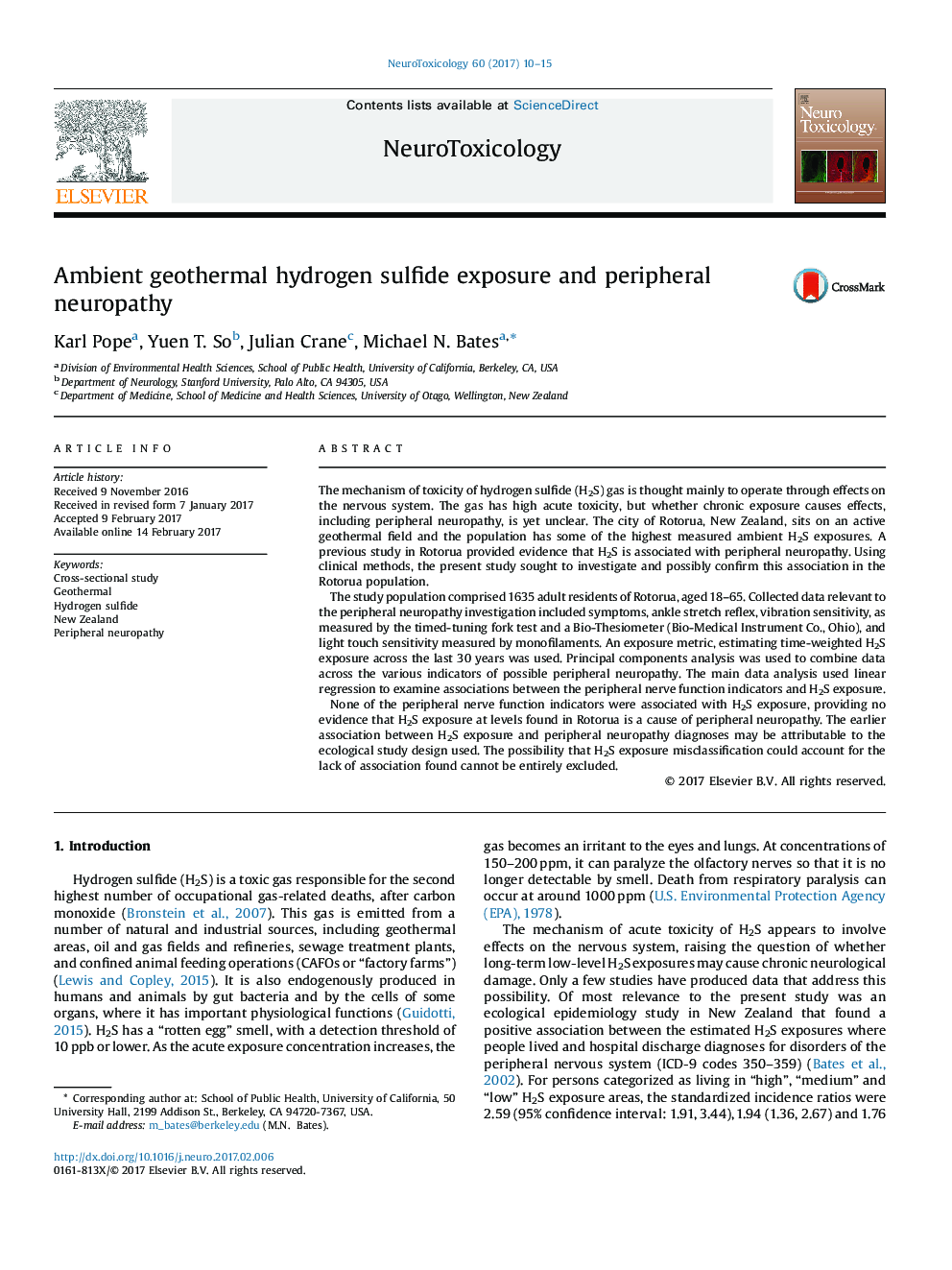| Article ID | Journal | Published Year | Pages | File Type |
|---|---|---|---|---|
| 5560818 | NeuroToxicology | 2017 | 6 Pages |
â¢Largest epidemiology study of peripheral neuropathy and hydrogen sulfide exposure.â¢The geothermal source has the advantage of no likely emitted confounding exposures.â¢No association found between H2S exposure and peripheral neuropathy.
The mechanism of toxicity of hydrogen sulfide (H2S) gas is thought mainly to operate through effects on the nervous system. The gas has high acute toxicity, but whether chronic exposure causes effects, including peripheral neuropathy, is yet unclear. The city of Rotorua, New Zealand, sits on an active geothermal field and the population has some of the highest measured ambient H2S exposures. A previous study in Rotorua provided evidence that H2S is associated with peripheral neuropathy. Using clinical methods, the present study sought to investigate and possibly confirm this association in the Rotorua population.The study population comprised 1635 adult residents of Rotorua, aged 18-65. Collected data relevant to the peripheral neuropathy investigation included symptoms, ankle stretch reflex, vibration sensitivity, as measured by the timed-tuning fork test and a Bio-Thesiometer (Bio-Medical Instrument Co., Ohio), and light touch sensitivity measured by monofilaments. An exposure metric, estimating time-weighted H2S exposure across the last 30 years was used. Principal components analysis was used to combine data across the various indicators of possible peripheral neuropathy. The main data analysis used linear regression to examine associations between the peripheral nerve function indicators and H2S exposure.None of the peripheral nerve function indicators were associated with H2S exposure, providing no evidence that H2S exposure at levels found in Rotorua is a cause of peripheral neuropathy. The earlier association between H2S exposure and peripheral neuropathy diagnoses may be attributable to the ecological study design used. The possibility that H2S exposure misclassification could account for the lack of association found cannot be entirely excluded.
